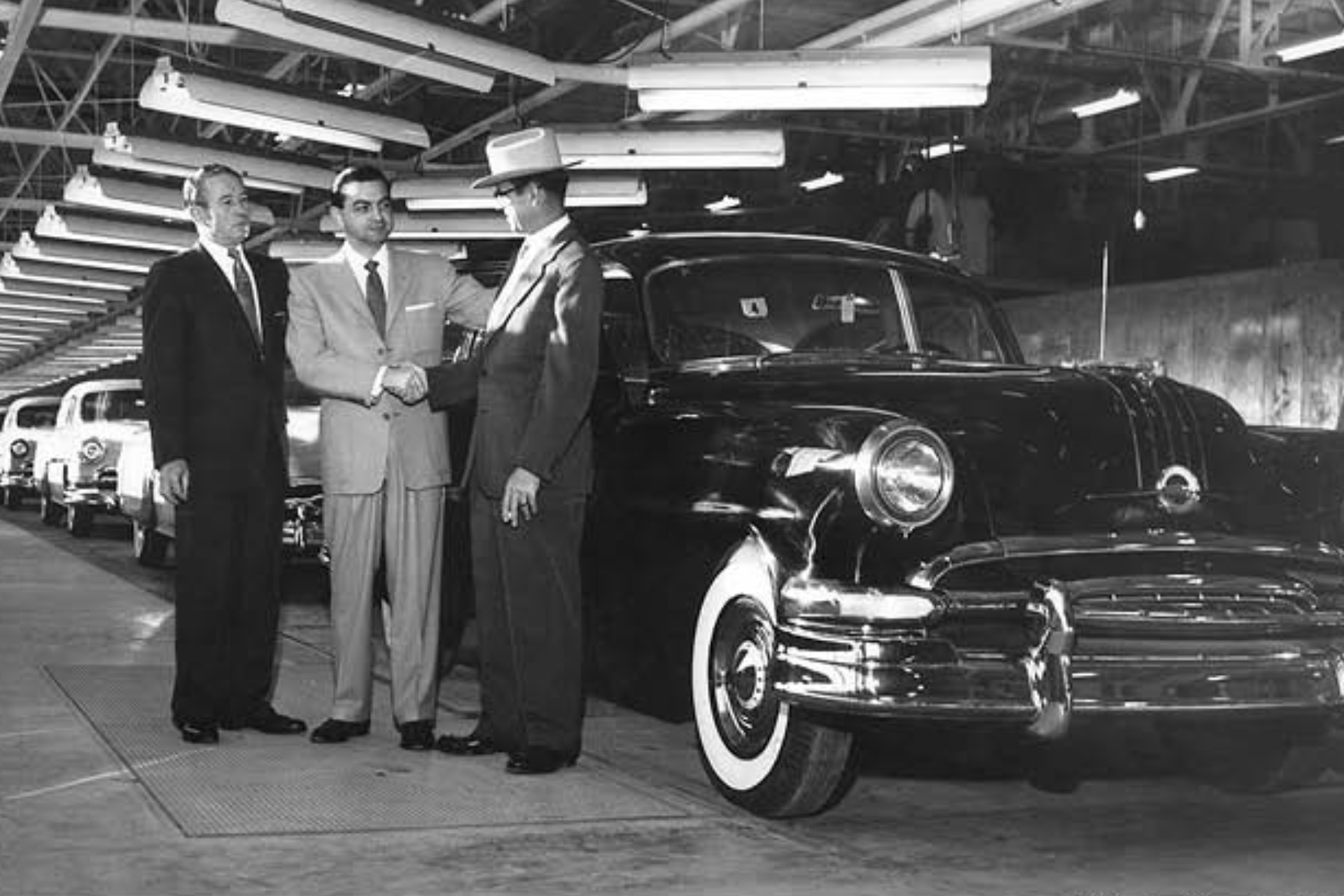
Arlington's Industrial Revolution
There’s no doubt Arlington’s version of the industrial revolution shifted into overdrive in 1951 when General Motors announced construction of an auto assembly plant in the city.
That news—G.M.’s first Texas plant—created ripples of excitement in the American Southwest, becoming the first big catalyst launching the city into enormous population and economic development growth.
If G.M. was the metaphorical overdrive, industrial warp speed ramped up the process in 1956 with creation of the sprawling, ten-square-mile Great Southwest Industrial District in Arlington and Grand Prairie. Great Southwest, at the time touted as the largest industrial park in America, would bring in hundreds of companies (including more than 100 branches of Fortune 500 companies), its own railroad system and employ thousands.
Great Southwest and CEO/creator Angus Wynne Jr. would also create a not-so-modest side business, Six Flags Over Texas Amusement Park, that would quickly become a dominant component of Arlington’s brand—but the amusement and visitation business is a separate story by itself. This illustrates, however, that the presence of industry in a community inevitably provides a multiplier, spinoff effect, creating other economic and quality of life opportunities.
Though Arlington is among the nation’s 50 most populous cities today, an estimated 8,000 residents lived in the pre-G.M., pre-Great Southwest small-town Arlington of 1951, a vivid illustration of the economic and demographic impact of industrial presence.
This importance acknowledged, industrial presence has always been a factor in the city’s development. Arlington Journal Editor W.M. Stanberry in a 1904 January edition devoted his editorial space to “Arlington achievements” related to business.
Though residents numbered fewer than 1,000 and the city had been in official existence only 20 years (incorporated in 1884), the list already included several early industrial examples, dominated by agricultural services: Five cotton gins, an oil mill (for cottonseed oil), a corn and flour mill and two corn shelling plants. Arlington’s location midway between Fort Worth and Dallas, and a Texas and Pacific Railroad stop, made it ideal for an agricultural products shipping point.
Though industry was not one of early Arlington’s strengths prior to the arrival of G.M. and Great Southwest, there were earlier examples such as Southern Ornamental Iron Works, the company building a variety of metal products but gaining fame for manufacturing the quickly assembled Bailey bridges used in World War II. The version made in Arlington was the double Bailey, enabling two-way traffic.
Other early industries—some no longer around—included R.C. Can Company, Better Monkey Grip Company and American Can. Another prominent industry for many years was mobile home manufacturing, much of that focus being on frames and other components. Older companies like Martin Sprocket and Gear or Oil States Rubber also chose Arlington for their home.
In recent years, the I-20 corridor has become the industrial pace setter for Arlington and a significant provider of employment. United Parcel Services distribution center occupies slightly more than a million square feet and provides 1,400 jobs. Summit Racing Distribution Center is 750,000 square feet with about 300 jobs.
Other major I-20 distribution, manufacturing, and warehousing employers – total about 3 million square feet – include but are not limited to QFC Plastic, Lockheed Missiles, Ricoh, Northern Tool, MNI Source, Baker Distributing, Tellworks, XRO Logistics, DSC Logistics, INY, Sheffield Metal, Caraustar Industrial Products, Phillips Pet Food Supply, Doskocil Plastics and a massive Rooms to Go distribution and warehouse center, the latter by itself a million square feet. All of this is centered by the Arlington Municipal Airport, which is also home to the Bell Helicopter Flight Research Center.
I-20’s largest employer is GM Financial, which occupies three buildings collectively consuming more than a million square feet – also with 3,400 employees and an announced intention to expand to 4,000. Industry is clearly big in Arlington. And growing.
This article was originally written at the request of Arlington’s Landmark Preservation Commission.

